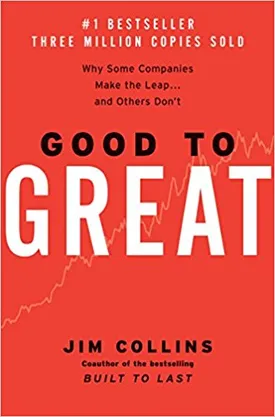Good to Great: Why Some Companies Make the Leap and Others Don’t by Jim Collins
Good to Great: Why Some Companies Make the Leap and Others Don’t by Jim Collins is a book that has changed the way we think about business. The book challenges the traditional thinking of average, and mediocrity, by proposing that companies should strive to go beyond being “good” to be extraordinary, “great”. Collins draws on his research to write a practical guide to help companies build exceptional leaders and teams.
In Good to Great: Why Some Companies Make the Leap and Others Don’t, Collins identifies a pattern of success shared by the “good-to-great” companies that he studied, which he calls the “Level 5 Leadership”. According to Collins, this particular leadership is the single most important factor in making the leap from good to great. The Level 5 leader embodies a combination of personal humility, ambition and discipline that allows them to make hard decisions, create an environment of trust and respect, and effectively motivate their team to greatness.
Collins also identifies a few key steps that the good-to-great organizations took in order to make the leap. These include a thorough review of the company’s financial foundation prior to making any kind of strategic or transformational change, an intense focus on the few “right” objectives that build company value, and a commitment to developing a “culture of discipline”. By first building a strong foundation and then focusing on the few critical goals, these companies were able to achieve consistent, creative and sustained success.
Collins further explains the importance of recruiting and building a leadership team that has the capacity for the transformational change. The “good-to-great” companies that he studied each had a core group of executives who were responsible for driving the transformation. This group of leaders had a shared vision of the company’s future and the skills and capabilities to get it there. They egaged in activities such as carefully research team-building and creating an intentional culture that enabled other employees to perform at the highest level.
The concluding chapter of Good to Great: Why Some Companies Make the Leap and Others Don’t provides a final overview of the lessons learned. Collins summarizes the “core principles” of great success and refines the “boilerplate model” he developed for success.
In Good to Great: Why Some Companies Make the Leap and Others Don’t, Collins provides an insightful and detailed overview of how some companies are able to achieve true greatness. Though there is no sure-fire formula for success, the book provides a step-by-step guide for those interested in transforming their organizations. With the use of empirical research, Collins provides a concrete plan for taking the first steps towards becoming the best.

